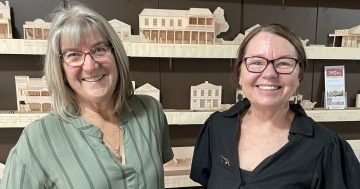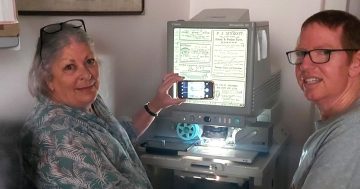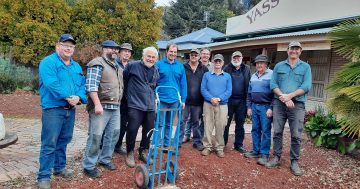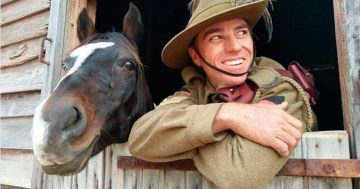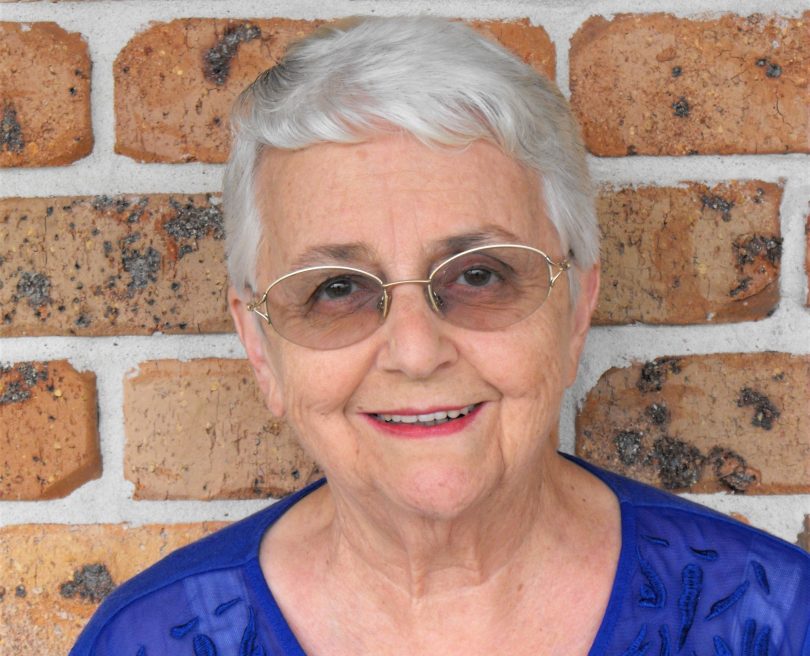
Moruya-born Shirley Jurmann has won the 2021 Fergus Thomson OAM Heritage Award. Photo: Eurobodalla Shire Council.
From the very outset it is clear Shirley Jurmann has a heartfelt connection to the Far South Coast town of Moruya.
“I’ve got Moruya River water running in my veins,” she said at the start of her interview with About Regional.
Born and bred in the town as a fourth-generation member of its Louttit family, she has been announced as the winner of the Fergus Thomson OAM Heritage Award for 2021, which recognises projects that contribute to the community’s appreciation and awareness of the Eurobodalla Shire’s heritage.
“For somebody like me who’s Moruya through and through, there can be no greater honour,” she said.
“I’m so glad they are doing that as it encourages people to preserve not just the basic history of the place, but all the little stories and what people managed to do.”
She is a long-time member of the Moruya and District Historical Society (MDHS), which has published many of her observations about historical people and events of the region.
The historical society’s president Susan Murphy said Ms Jurmann’s writing provided great insight on the everyday lives of different generations who lived and worked in Moruya by “using their recorded memories and photographs to bring them to life”.
“Her work also inspires researchers interested in the history of our district,” Ms Murphy said.
Ms Jurmann said what she likes about the town’s history is “every little story is interesting and the more you know, the more you want to know”.
There are plenty of “quirky bits” of the past that stick in her mind, she said. For instance, there used to be a woman who lived on South Head Road in the early 1900s with an orchard.
She had surplus produce so began preserving what she had – oysters, lobsters, fish, vegetables and fruit – and one year boarded a ship and took her collection to the Sydney Royal Easter Show where it was found to be very impressive.
Ms Jurmann also told a story involving her great-grandfather Joseph Louttit, who owned a quarry on the side of the river with his brother John Flett Louttit after they both moved to the town in the 1850s. The quarry was where stone for Hyde Park’s statute of Captain Cook was mined.
When one of the stones was being loaded onto a ship, there was an accident and it fell onto John, badly injuring him. A doctor said there was no point treating him as he’d likely die, but a couple of weeks later went to check on him and found him up and moving around.
Ms Jurmann said the story went that Joseph caught a shark, put it onto a sheet of iron and let the oil from the animal drain out onto it, then used the oil to treat John’s rheumatism so he was able to recover from the pain better.
She recalled how her interest in local history started when she was about 13 years old and had ridden her bike to the cemetery at Toragy Point where she saw a headstone for someone with the same name as her. She later asked her father about it, who told her it belonged to Joseph.
When her son was born in the 1960s she started looking into her family history, which developed into an interest into the history of Moruya itself.
She is still researching the town’s history, describing it as “never ending” as looking into the rectory for the Church of England.
Eurobodalla Shire Council’s strategic planner Stephen Halicki said Ms Jurmann had written many articles and several booklets for the MDHS, but it was her articles in the popular press that brought Moruya’s olden days to life for most.
“Among them [were] her nine-part Time Travel series in the Moruya Examiner in 2018, followed by a 10-part series on health care, covering historical doctors and nurses and the hospitals they worked in,” he said.
“Her latest published article recounted the disastrous 1884 bushfire that swept across Moruya and surrounds.
“Shirley’s work preserves the unique history of this district for future generations and enables people to discover their place and those who have shaped the world in which they live.”









